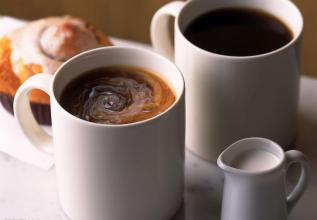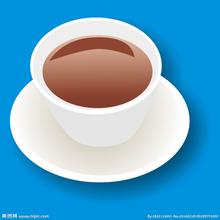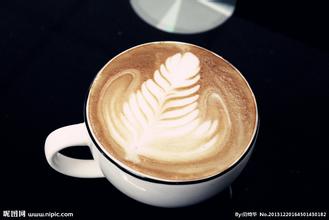Coarse and fruity flavor of Cuba's Crystal Mountain Coffee Manor flavor and taste characteristics of fine coffee beans
Cuba's coastline is about 6000 kilometers long, most of which are flat, with mountains in the east and middle and hills in the west, and most of the territory has a savanna climate. [6]
In addition to Cuba, it also includes more than 1600 surrounding islands of different sizes. The islands are made up of five islands: Savannah, Camag ü ey, Colorados, Queen's Garden and Canareos. Youth Island (also known as Pine Island), located in Batahuano Bay, is the only larger island along the coast. The total length of the coastline is 6073 kilometers. Most of the island of Cuba is flat, with mountains accounting for only 1x4 of the total area. There are three major mountains in the country: the Guaniganico Mountains, the Eskambria Mountains and the Maestra Mountains (the highest mountain range in Cuba, of which Mount Turchino is 1974 meters above sea level, the highest peak in Cuba).
Hydrology
The longest river in Cuba, R í o Cauto, is 370km long. [1] Cuba has more than 200 rivers and thousands of streams, most of which run north-south, so the current is shallow and fast. The Cato River, which flows east-west to the north of the Maestra Mountains, is the largest river in Cuba, but it is only 370 kilometers long and is the only navigable river in Cuba. Cuba's coastline is tortuous, generally steep in the north and flat in the south, with many good ports. Almost all of them are bays in the shape of pockets and bellies, which are very beneficial to shipping. The important bays are Havana Bay, Nippe Bay, Guantanamo Bay, Santiago Bay, Sienfugos Bay, Onda Bay and Matansas Bay and so on. [7]
Climate
Most of Cuba has a tropical rain forest climate, only the southwestern coastal leeward slope has a savanna climate, with an annual average temperature of 25 ℃. Except for a few areas, the annual precipitation is more than 1000 mm. [3]
Natural resources editor
Mineral resources
There are nickel, cobalt, manganese, chromium, iron and copper with mining value. Among them, nickel reserves are about 6.6 million tons, accounting for 40.27% of the world's total reserves. Manganese reserves of about 7 million tons; chromium reserves are also rich; iron ore reserves of about 3.5 billion tons, mainly distributed in Mount Nippe and Mount Palakoa, is one of the largest reserves in the world; almost all the mountains of Cuba contain copper deposits; Pine Island has tungsten deposits and produces marble. [8]
Petroleum resources
Cuba announced in 2008 that it had proven recoverable oil reserves of 20 billion barrels, mainly in the Cuban exclusive economic zone in the Gulf of Mexico. However, according to the US Geological Survey, Cuba has offshore oil reserves of about 5 billion barrels, with a maximum of 9 billion barrels. The Republic of Cuba, located in the West Indies, has a detached and pristine natural environment, the scenic Caribbean Sea and the world-famous Crystal Mountain Coffee.
In 1748, coffee was introduced into Cuba from Domiga, and Cuba began to grow coffee ever since. With fertile land, humid climate and abundant Rain Water, Cuba can be called a natural treasure land for coffee cultivation. The suitable natural conditions provide a favorable natural environment for the growth of coffee trees, and coffee is well planted and developed here. In Cuba, the cultivation of coffee is regulated by the state. The best coffee growing area in Cuba is located in the Central Mountains. Because this area not only grows coffee, but also produces quartz, crystal and other precious minerals, it is also known as Crystal Mountain. At present, Crystal Mountain Coffee is synonymous with top Cuban coffee. A prominent feature of Crystal Mountain Coffee is its large granule and bright green color of coffee beans.
In Cuba, most of the coffee beans are picked by hand. Coffee beans are picked about every half a month during the ripening period. During or after picking, coffee beans are classified and those immature and bad beans are removed to ensure the quality of the coffee. Cubans usually deal with coffee beans in two ways-tanning and washing. Tanning is the simplest, cheapest and most traditional way to treat coffee, which is to let the coffee fruit dry in the sun but not ferment. The general drying time is about four weeks. The washing rule makes the aroma of fruit more into the coffee beans, thus adding a kind of coarse fruit aroma to the coffee.

Important Notice :
前街咖啡 FrontStreet Coffee has moved to new addredd:
FrontStreet Coffee Address: 315,Donghua East Road,GuangZhou
Tel:020 38364473
- Prev

Taste smooth Peruvian Coffee Flavor Manor characteristics of Organic Coffee Fine Coffee
The country is divided into 24 provinces and one directly affiliated region (Kaya). The names of the provinces are as follows: Amazon
- Next

Introduction to the overall soft flavor and taste characteristics of Salvadoran coffee manor
Farah Bandomatti National Liberation Front (Frente Farabundo Mart parala Liberacin Nacional), the ruling party. In October 1980, the Farah Bendomatti people's Liberation Army, the National Resistance Forces, the people's Revolutionary Army, the Central American Labor Revolutionary Party and the Communist Party of El Salvador jointly formed an armed front against the government. In January 1992, the Front signed with the Government
Related
- Detailed explanation of Jadeite planting Land in Panamanian Jadeite Manor introduction to the grading system of Jadeite competitive bidding, Red bid, Green bid and Rose Summer
- Story of Coffee planting in Brenka region of Costa Rica Stonehenge Manor anaerobic heavy honey treatment of flavor mouth
- What's on the barrel of Blue Mountain Coffee beans?
- Can American coffee also pull flowers? How to use hot American style to pull out a good-looking pattern?
- Can you make a cold extract with coffee beans? What is the right proportion for cold-extracted coffee formula?
- Indonesian PWN Gold Mandrine Coffee Origin Features Flavor How to Chong? Mandolin coffee is American.
- A brief introduction to the flavor characteristics of Brazilian yellow bourbon coffee beans
- What is the effect of different water quality on the flavor of cold-extracted coffee? What kind of water is best for brewing coffee?
- Why do you think of Rose Summer whenever you mention Panamanian coffee?
- Introduction to the characteristics of authentic blue mountain coffee bean producing areas? What is the CIB Coffee Authority in Jamaica?

